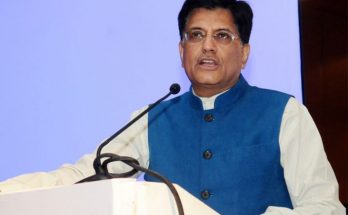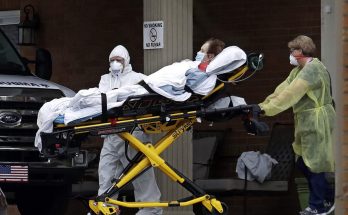 The unprecedented floods in Jammu and Kashmir (J&K), have wrecked havoc and led to widespread loss of life and damage to property. While the focus of efforts is rightly on the human element of the disaster, there is a simultaneous need to look at two critical issues, which have come to define the events.
The unprecedented floods in Jammu and Kashmir (J&K), have wrecked havoc and led to widespread loss of life and damage to property. While the focus of efforts is rightly on the human element of the disaster, there is a simultaneous need to look at two critical issues, which have come to define the events.
The first is the efficacy and efficiency of disaster management in the country, with specific reference to the situation in J&K. The National Disaster Management Authority (NDMA) is responsible for helping build a “safer and disaster resilient India” through proactive measures that ensure prevention, preparedness and mitigation of disasters. The National Disaster Response Force (NDRF) provides specialised response to national and man-made disasters, with a present strength of 10 battalions. The force is also equipped with a wide variety of stores, which give it specialised capability for disaster relief efforts. This force can support relief efforts during calamities where time and distance provides an opportunity to respond in an acceptable time frame and the scale of disaster relief is within its capability. However, as the Uttarakhand disaster in 2013 and the recent floods in J&K proved, the force is likely to be constrained due to a number of factors.
First, it is unlikely that the NDRF will be the first responder in case of a disaster, given the proximity of other uniformed forces in close vicinity. Second, the scale of disaster, as seen in the case of J&K, has time and again proved that disaster relief cannot be undertaken only by a force like the NDRF. Third, even though the NDRF is equipped with stores which are better suited for relief effort, large scale mobility and evacuation can be carried out by the armed forces, which have a much larger fleet of vehicles, boats, helicopters and aircrafts at their disposal. Fourth, the capability of the armed forces in terms of manpower is not only colossal, this is further augmented by a very efficient command and control system, which increases the efficiency of its efforts manifold. Fifth, the armed forces bring along with the strength of its manpower, very high levels of motivation, imbibed through a sense of regimentation and nationalistic zeal, which has been carefully nurtured for decades by leaders at all levels of command.
These factors have not been highlighted to underestimate or undermine the importance or efficacy of the NDRF. It only reinforces strengths of each organisation, in order to best utilise the resources at hand. It is evident that unless there is a major accretion in terms of the force level and equipment profile of the NDRF, the armed forces are likely to remain the first and largest responders in case of natural disasters. This raises the need to better define their role and charter to improve efficiency and effectiveness of response during disasters.
It is quite evident that the NDRF cannot substitute the armed forces and attempts at developing an alternative force will remain constrained due to resources. It is also clear that a much smaller force with similar capabilities as the larger one, will add little value, despite generous budgets. The NDRF must therefore fill the voids that the army or airforce finds difficult to handle. It must function as the core team, which is trained and equipped to deal with disaster relief. This core should be infused with world class capacity, both in terms of procedural and technical elements. They should be able to provide specialised support, which cannot be undertaken by the uniformed forces. This includes skills like iron and concrete cutting techniques in case of earthquakes, setting up an alternative satellite based command and control hub, which facilitates better organisation of relief efforts, establishment of relief camps in conjunction with the civil administration, release of specialist equipment to augment existing resources etc.
Given the de facto responsibility of the armed forces in disaster relief, it would serve them better if this can be formalised, with sector specific stores allocated for disaster relief. This could also include periodic interaction with the civil administration to coordinate requirement of supplies and their location. Disaster management exercises can further be conducted to rehearse all elements of the state to ensure better response.
There is a dominant view that the armed forces, already employed for a number of responsibilities besides safeguarding the country against external threats, must ideally not be employed for disaster management. However, repeated instances have proved that the armed forces will continue to do the heavy lifting during such situations, albeit in an ad hoc manner. It therefore stands to logic that this role is formalised and designated in a manner that efficiency can be improved and procedural voids filled.
The second element deals with the attitudes of the people of J&K towards the army. Divisive politics and secessionist propaganda has an inherent capacity to corrode the moderate and rationale elements of any society. The relentless attrition of these forces have hardened attitudes and corrupted mindsets, especially of the youth during the last few years. The contagion of cynicism and a besieged mindset has slowly but steadily percolated in Kashmiri society. Friday prayers have become tools for separatists and stone throwing the expression of choice to give vent to angst and frustration. More often than not, the army ends up as the singular face of government, the youth feel compelled to fight against. The ongoing flood relief, yet again gives an opportunity to the youth of the state to take a dispassionate view of their army and recognise it for what it stands, especially since the calls for bandh have been replaced by the embarrassed silence of reason.
The floods in J&K, and before this the snow tsunami of 2005, as the disaster was termed, brought forth the softer side of the army, which, despite its own casualties, went out of the way to provide support to the common people of the state. 2014 can prove to be a landmark, wherein senseless anger can be replaced with hope for renewed efforts towards lasting peace.
On its part the army must take this opportunity to build bridges and allow the past to fade away with the receding waters. The single most important lesson that can be learnt from the disaster is the power of communication that has so effectively connected the army with the people of the state. The role of the public information apparatus of the army highlights the need to open up and remain connected with the common man. Facebook and Twitter have become the threads that have eclipsed distances and saved countless lives. This welcome initiative on part of the army must continue with relentless zeal.
For the government, this is yet again an opportunity to encourage the moderate voice of reason, which had been suppressed under the weight of extremism. The opening can best bear fruit during the forthcoming elections in the state, when the people will elect their leaders. This in turn will bring fresh ideas and fresh faces, hopefully unencumbered by past mistrust, to forge the collective energy of the youth, in purist of constructive rather than destructive synergy.
Author Profile
- India Writes Network (www.indiawrites.org) is an emerging think tank and a media-publishing company focused on international affairs & the India Story. Centre for Global India Insights is the research arm of India Writes Network. To subscribe to India and the World, write to editor@indiawrites.org. A venture of TGII Media Private Limited, a leading media, publishing and consultancy company, IWN has carved a niche for balanced and exhaustive reporting and analysis of international affairs. Eminent personalities, politicians, diplomats, authors, strategy gurus and news-makers have contributed to India Writes Network, as also “India and the World,” a magazine focused on global affairs.
Latest entries
 DiplomacyApril 23, 2024Resetting West Asia, re-booting the world, but not fast enough: T.S. Tirumurti
DiplomacyApril 23, 2024Resetting West Asia, re-booting the world, but not fast enough: T.S. Tirumurti India and the WorldApril 22, 2024India’s G20 Legacy: Mainstreaming Africa, Global South in global agenda
India and the WorldApril 22, 2024India’s G20 Legacy: Mainstreaming Africa, Global South in global agenda DiplomacyApril 10, 2024Diplomat-author Lakshmi Puri pitches for women power at LSR
DiplomacyApril 10, 2024Diplomat-author Lakshmi Puri pitches for women power at LSR India and the WorldApril 6, 2024UN envoy pitches to take India’s solutions to the world stage
India and the WorldApril 6, 2024UN envoy pitches to take India’s solutions to the world stage







